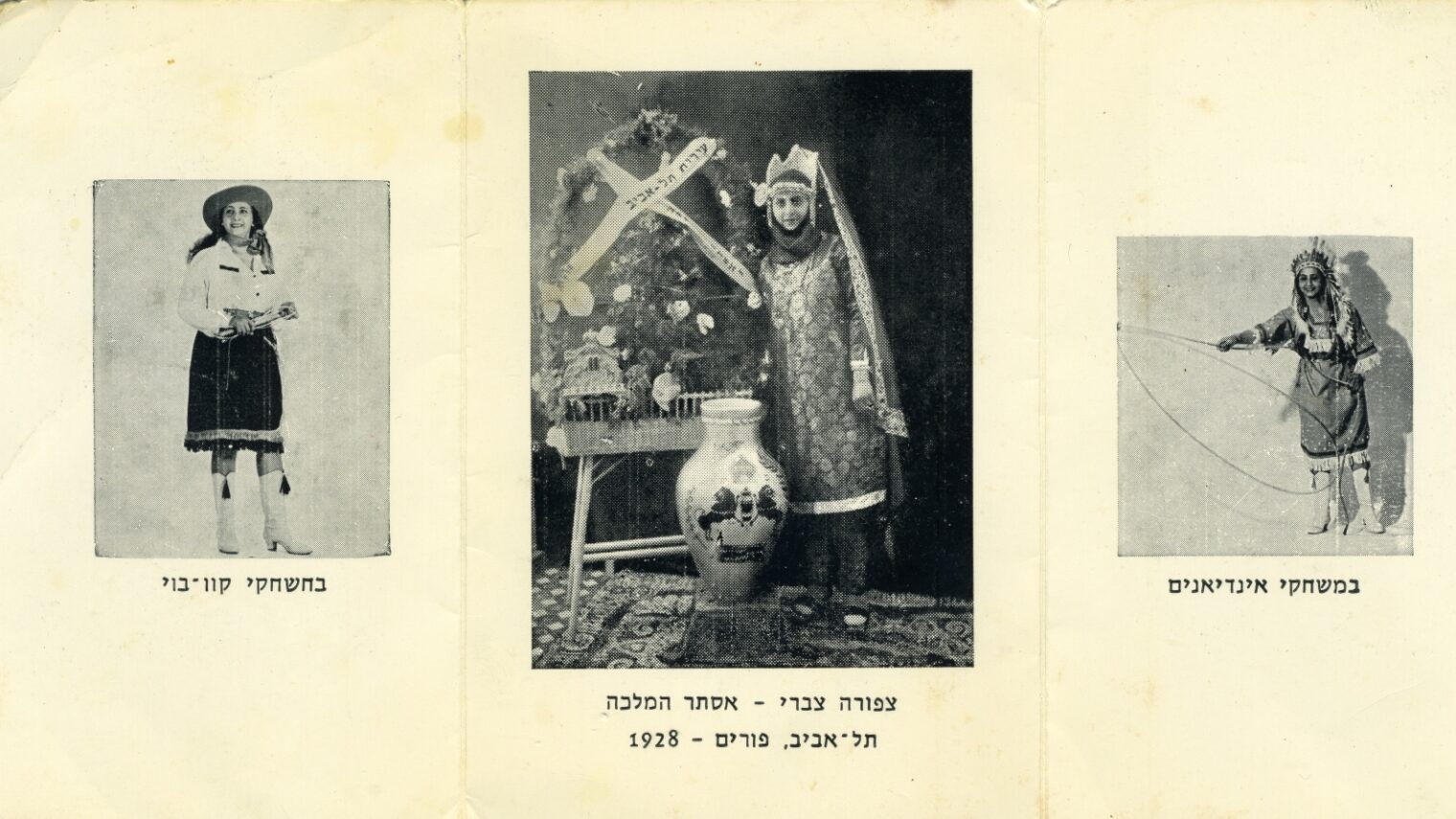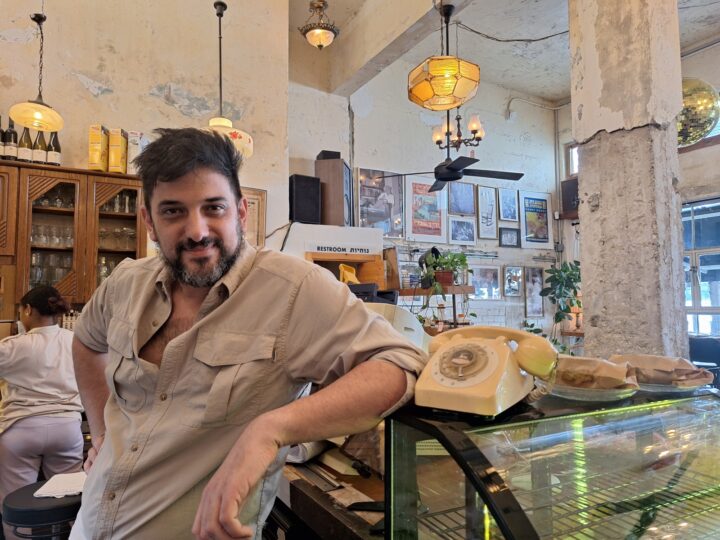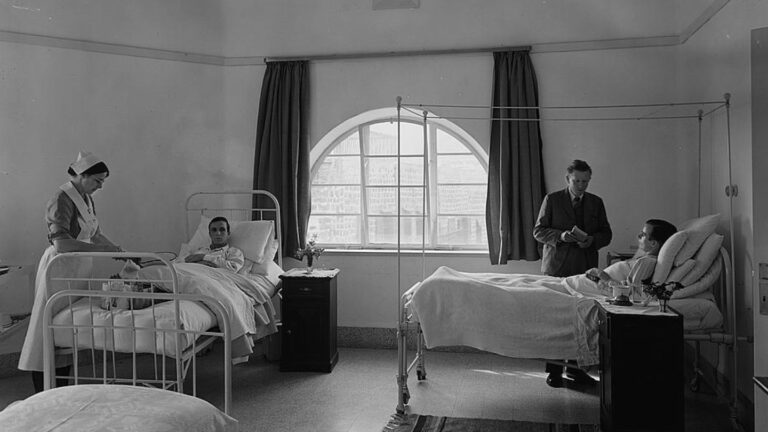It was early 1928 and Baruch Agadati, dancer-choreographer, artist, and Tel Aviv bon vivant was gearing up for a major Purim party. The city was in the midst of a construction boom to house Jews fleeing economic hardship and rising antisemitism in Europe.
Agadati — who had already held invitation-only, talk-of-the-town Purim parties for seven years — had secured the approval of Tel Aviv Mayor Meir Dizengoff for a city-wide blowout that would include a competition to crown “Queen Esther,” a young woman who would personify Tel Aviv: youthful and modern yet exotically Middle Eastern.
By February, posters appeared around town advertising a pre-Purim Election Ball at Tu B’Shvat that was to include, among other things, “Two Large Orchestras,” “Dancing till Dawn,” and “the election of the beautiful and typical Hebrew girl of Tel Aviv as Queen Esther.”
In 1928, that girl would be Zipporah Zabari, a 19-year old from Tel Aviv’s Yemenite neighborhood, who was transformed, Cinderella-like, from her daily job delivering milk to beauty queen.

Zabari explained to reporter Yaacov Gross in a television interview in the 1980s:
“I was riding along Tel Aviv’s streets, as I always did, delivering milk on the donkey, a small jug in hand. … Suddenly, I encountered before me a large beautiful poster. From a distance [I could see] written, ‘Electing Queen Esther.’ So, I said, ‘What’s this? Electing Queen Esther?’ I wasn’t lazy. I got off the donkey and go to the poster, and stood, and read. ‘She who wishes to be selected, and register as a candidate, must bring a letter with several signed recommendations.’ And bring it to such and such an office, to Mr. Agadati, and so on.”

“I said, ‘Oh, wonderful!’ … Everywhere I delivered milk, where I saw well-known people whose signature and recommendation were worthwhile, I got their signature. And so, I collected some signatures from work, and some from the area — well-known people — and I went and submitted the letter. And they said, ‘We’ll let you know when the Election Ball will be.’ And I went home.”
Despite her youth, Zabari was already a widow, having been forced into an arranged marriage at the age of 12. In an essay about Zabari, local historian and tour guide Ilan Shchori recounts that she would sneak into the cinema where the movies inspired her to be a dancer but those studies were derailed when her father, the neighborhood milkman, fell ill. Zabari left school to assist in his care and took over the milk route, until fate brought her before the poster for Agadati’s pre-Purim ball.
Once notified that her candidacy had been approved, Zabari had little time to prepare. “I didn’t have a pretty dress for a Queen Esther. So, I went… and fabric was very inexpensive on the street. I bought silk for 1.5 cents a length. I bought 2 to 3 meters. Went home. Cut it with my mother’s help. And sat to hand-sew it. Sewn by hand. And I sewed, two to three days till I finished it. And a few shiny ribbons for my head. And that was my costume.”

There were seven other contestants at the Election Ball, mostly daughters of well-to-do Tel Aviv burghers. Agadati called the young women onstage for introductions, then sent them off to mingle with the crowd and drum up votes. Each party-goer held an envelope and a ballot to be cast.
Zabari recalled in her 1980s interview, “I had no expectations. But in the midst of all the activity, someone came up to me and said, ‘You can already be happy. You got more than half the number of people here. It’s all in your ballot box. More than half are for you.’”
After she had been crowned, many of the city’s leading lights asked to be photographed with Zabari. Shchori writes that the list of luminaries included “the painter Reuven Rubin, the writer Asher Barash, Haaretz editor Moshe Glickson, Yediot Tel Aviv editor Ben Yishai and many others, and of course Baruch Agadati himself.”
The next day, Agadati moved ahead with preparations for his Purim carnival (later to be named the Adloyada), and Zabari went back to delivering milk. “It’s work. It’s necessary. People are waiting for milk – there are kids, babies… And a woman said to me, even two to three people, ‘What’s this? Queen Esther? Who was elected yesterday and now goes to work?’ And I said, ‘What about it? That was one thing, this is another.’ One has to live, no?”
The “coronation,” scheduled to be held in two weeks’ time in the presence of Mayor Dizengoff, was placed in jeopardy when Zabari’s father died suddenly. Not to be deterred, Agadati called together a council of rabbis – according to Shchori the group was headed by Ben-Zion Meir Hai Uziel (later the Chief Sephardi Rabbi) – who determined, not surprisingly, that the show was to go on.
As Zabari recalled, “They called me in, and said, ‘Because your father died, they suggest that you wear a black scarf on your head and neck as a symbol of mourning. And go do the celebration. Because royals do not mourn.’” In all documentation of the Tel Aviv Purim Carnival of 1928, Zabari’s black scarf can been seen displayed prominently.
“And because the rabbis permitted it, I had the honor of being the first Queen Esther of Tel Aviv.”
In fact, Agadati had already crowned two previous Queen Esthers, but Zabari was the first to be honored at an official ceremony; she received her award directly from Dizengoff himself.
Although she became a local media darling, Zabari aspired to an international career on the silver screen. Immediately after her reign ended, she moved to Czechoslovakia where she capitalized on her beauty queen status to launch an acting career.
Shchori writes that Dizengoff was enraged after the papers published photos of Zabari in a skimpy bathing suit.
The newspaper Doar HaYom clarified: “In connection with the reports that appeared in the newspapers some time ago about the life of last year’s Tel Aviv Queen, about the Yemenite Zipporah Zabari, the municipality turned to the brother of the engineer Asher Pesovsky who lives in Prague.
A letter of reply has been received from him informing him that the newspaper reports are incorrect, they are published only for sensationalism.
The truth is that the former queen is studying among well-known artists in Prague and has been invited by a serious artistic institution in the city to participate in an Oriental spectacle.
Considering that this is the first time she will perform on a large stage, it should be noted that she has succeeded and her natural artistic talent has been discovered.
She is living with an important Jewish family, and with their help is about to go to Berlin for a training course at the school of a well-known film company.”
Zabari moved to Berlin where she landed several bit parts including one alongside rising star Marlene Dietrich. However, Zabari would always be typecast as the dark-skinned exotic: Gypsy, Native American – even a lasso-wielding, horse-riding cowgirl. She learned tightrope-walking and knife-throwing, and eventually joined a traveling circus.
In Tel Aviv, rumors swirled. In 1935, journalist Uri Caesari wrote in Doar HaYom, “Today, many whisper about her ways. Some say that Dolores del Rio is none other but Zipporah, but because her passport is no good, she is an illegal in Hollywood, and therefore must hide behind this alias.”
Zabari – who was not Dolores del Rio — married and had a son: Dietrich (named after Marlene Dietrich) Douglas (after Douglas Fairbanks) Zechariah. In 1939, with the Second World War looming on the horizon, Zabari returned to Tel Aviv but shortly after the war’s end, went back to Germany to continue her performing career. In 1963, Yedioth Ahronoth reporter Yeshayahu Ben-Porat discovered Zabari working as a chambermaid in a Frankfurt hotel and wrote her story. Soon after, she moved back to Israel and settled in her old Tel Aviv Yemenite neighborhood.
In 1979, the Diaspora Museum featured Tzabari in a Purim exhibition. In 1980, director Avi Nesher cast her in a small role in his film, The Cowards. In 1994, the Queen of Tel Aviv passed away and was buried, alongside other Tel Aviv personages, in the Trumpeldor Cemetery.
On her gravestone is written: “Zipporah Zabari, Crowned by Mayor Dizengoff in 1928 as Queen Esther.”
Zabari was cited last year by HerStreet, an online campaign that aims to right the imbalance in streets named for males, as compared with those named for females (878 versus 61 in Tel Aviv, at last count). If the campaign is successful, perhaps Tel Aviv’s first queen will one day get her due.
















![Elections 1977 – Likud posters] In 1977, Menahem Begin led an election upset as Israel’s first non-Labor prime minister. Credit: GPO Elections 1977 – Likud posters] In 1977, Menahem Begin led an election upset as Israel’s first non-Labor prime minister. Credit: GPO](https://static.israel21c.org/www/uploads/2019/09/Elections_1977___Likud_posters_-_GPO-768x432.jpg)
